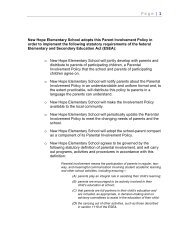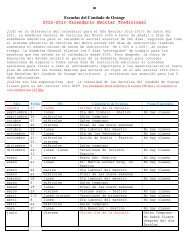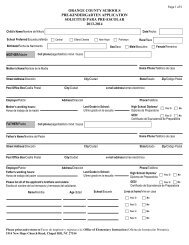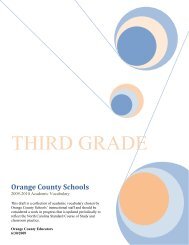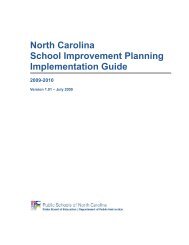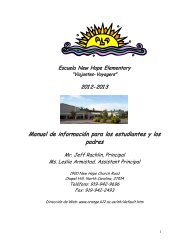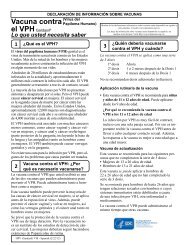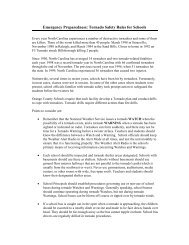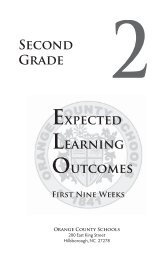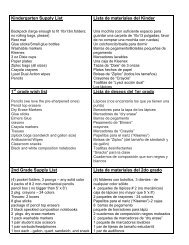Closing the Achievement Gap - Washington State School Directors ...
Closing the Achievement Gap - Washington State School Directors ...
Closing the Achievement Gap - Washington State School Directors ...
Create successful ePaper yourself
Turn your PDF publications into a flip-book with our unique Google optimized e-Paper software.
economically disadvantaged families and communities often have differentbasic values and needs, and it is <strong>the</strong>se differences that often create conflictat school. Behaviors of students from cultures different from those of <strong>the</strong>teacher are often not understood and can be misinterpreted by school staffwho have had very different life experiences.The vast majority of teachers in <strong>Washington</strong> state are mono-cultural andmonolingual while student bodies are increasingly culturally diverse, bilingual,and English language learners.Students of color and students from poverty often bring experiences and anunderstanding of history and knowledge that <strong>the</strong>y do not see representedin <strong>the</strong> teaching and learning taking place in <strong>the</strong> classroom. For example,relevancy of curriculum for American Indian students is questioned when<strong>the</strong>y do not see <strong>the</strong>ir culture and languages represented in <strong>the</strong> curriculum.All staff must be trained in how <strong>the</strong>ir own culture and behavior affectsculturally and linguistically different students. These behaviors and culturaldifferences include how families perceive schooling, values and expectationsof <strong>the</strong> culture and simple things, like gestures and mannerisms.Staff need <strong>the</strong> skills to teach children to be “bi-cultural,” to succeed inschool and <strong>the</strong> workplace while remaining culturally proficient in <strong>the</strong>irhomes and neighborhoods.Attitude plays a key role in how individuals interact with each o<strong>the</strong>r. Biasedattitudes of particular cultural and socio-economic groups significantly altera school’s learning environment. A negative attitude breeds a negativeschool climate, and positive attitudes send clear messages that all are valued.Care must be taken to not let biased attitudes establish differentachievement expectations for students from different backgrounds.Questions to Guide <strong>the</strong> Discussion1. What dialogue on education and race have been held in <strong>the</strong> schoolsand communities? Do staff understand <strong>the</strong> impact of culture and raceon learning? Have <strong>the</strong>y been educated about <strong>the</strong> culture of povertyand its effects on learning?2. What false assumptions are held about English language learners,children and families in poverty, and students who are culturallydifferent? What false assumptions operate about parent’s willingnessto be involved in <strong>the</strong>ir children’s education? What unresolved issuesabout race and class exist that are known to influence education?3. How culturally competent is <strong>the</strong> educational system, board and staff?What can be done to be more culturally responsive?28CLOSING THE ACHIEVEMENT GAP: A POLICY ACTION GUIDE




